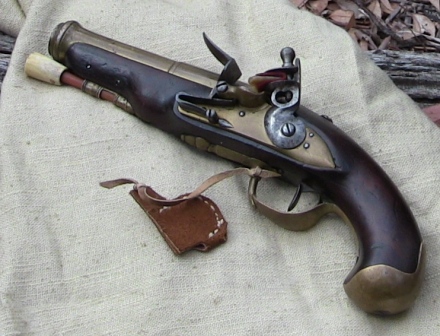I am thinking about buying a flintlock pistol and not sure which caliber, 45, 50 or 54, to go with.
Are there any opinions or experience related thoughts about which caliber might have an advantage over another?
I am thinking about cost of operation (powder used per load, lead needed per round, weight when carried in the field etc.) Or are the differences so small as to not matter which caliber is chosen?
Your advice is appreciated.
GA Ranger
Are there any opinions or experience related thoughts about which caliber might have an advantage over another?
I am thinking about cost of operation (powder used per load, lead needed per round, weight when carried in the field etc.) Or are the differences so small as to not matter which caliber is chosen?
Your advice is appreciated.
GA Ranger







